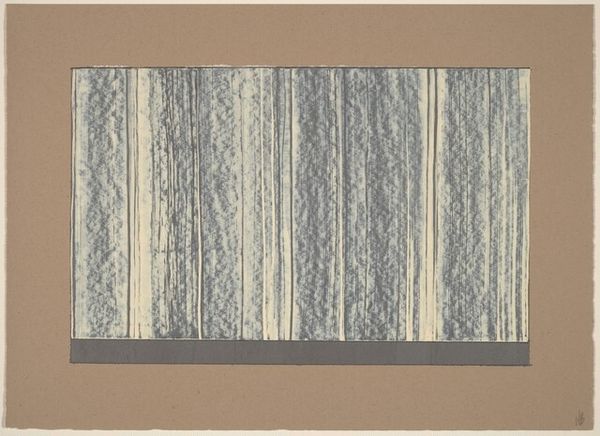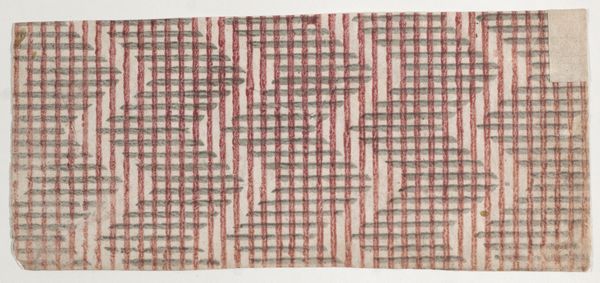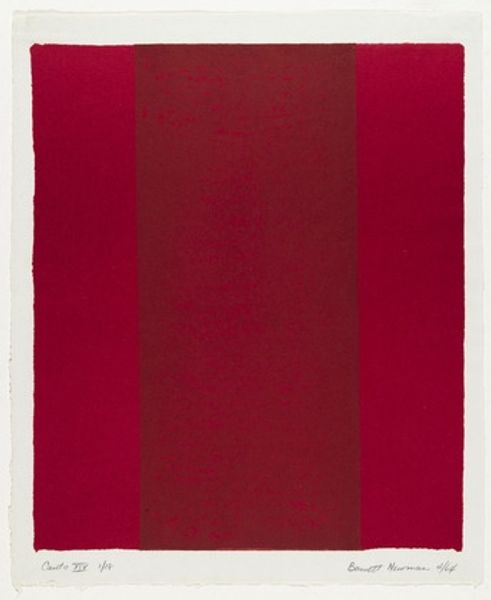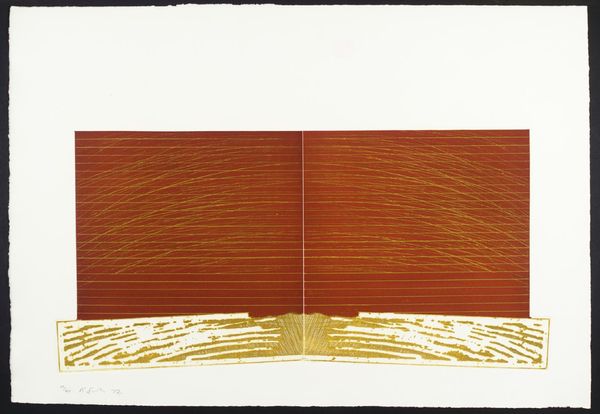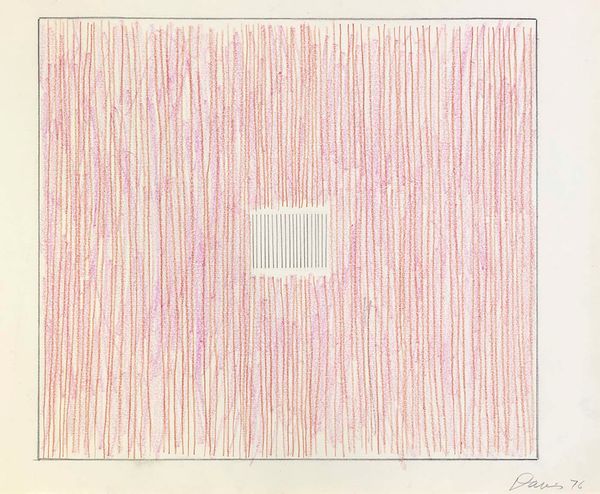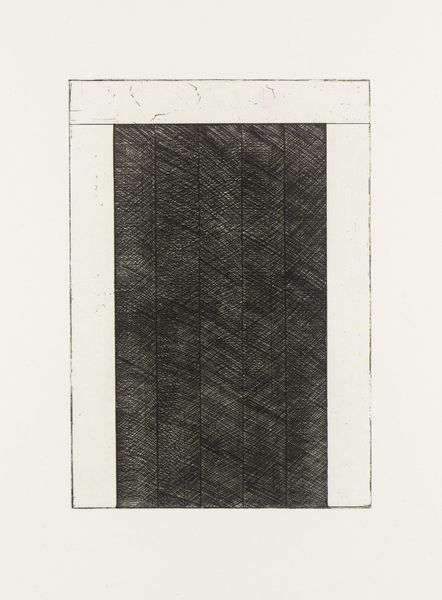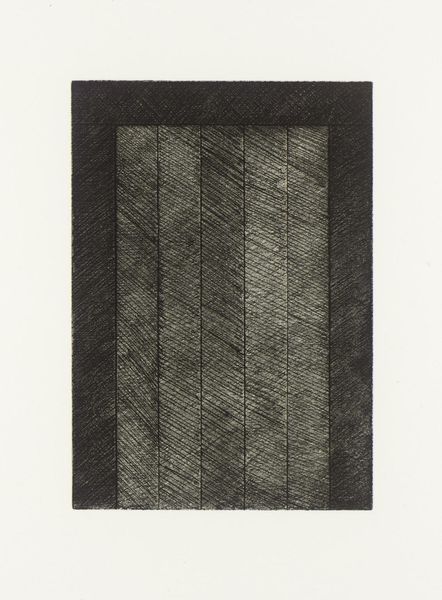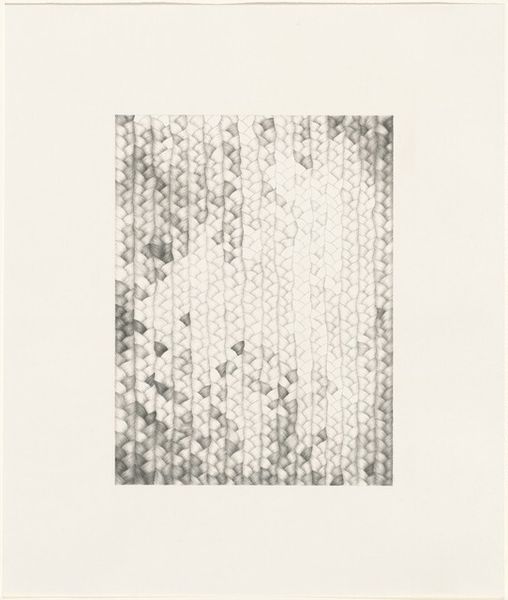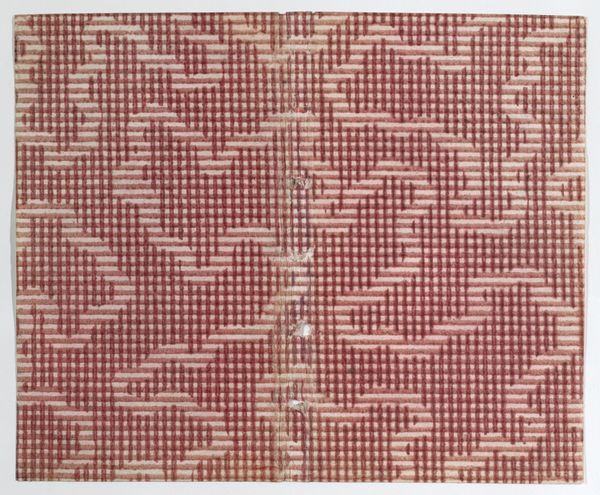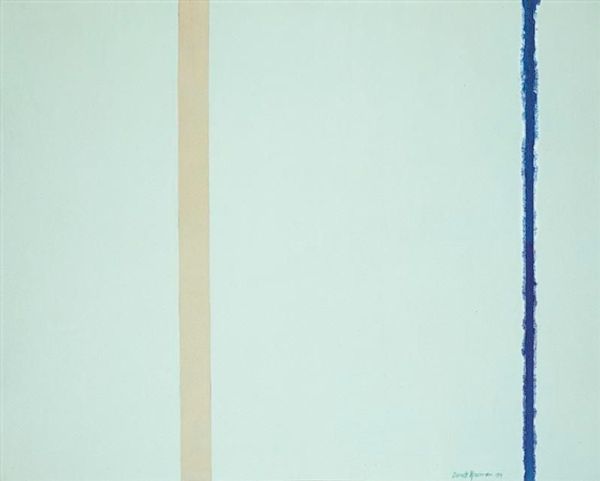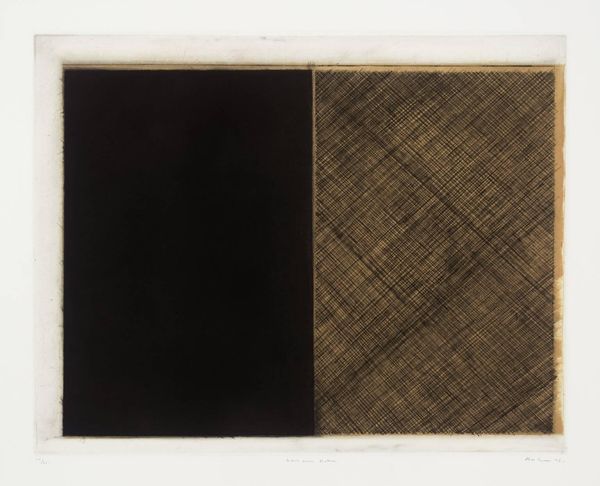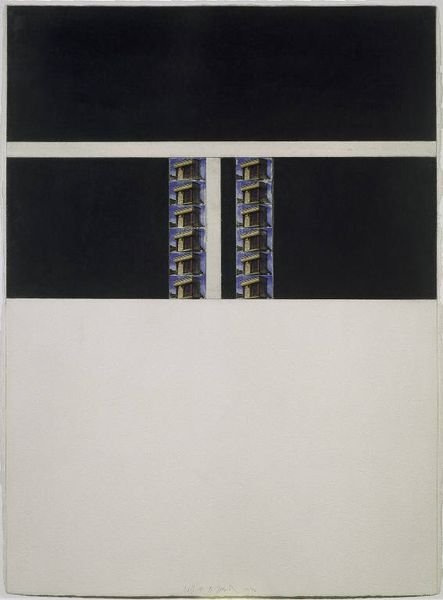
drawing, paper, pencil
#
drawing
#
paper
#
geometric
#
pencil
#
cityscape
#
realism
Dimensions: image: 25.4 × 35.56 cm (10 × 14 in.) sheet: 35.88 × 44.13 cm (14 1/8 × 17 3/8 in.)
Copyright: National Gallery of Art: CC0 1.0
Curator: So, here we have Michael Clark's "Classic Windows, Red Brick" created in 1979. It’s a drawing on paper, primarily pencil, and strikes me as a cityscape fragment—geometric in its unwavering precision. What's your initial take? Editor: Initially, there’s something almost aggressively mundane about it. All that red brick, rendered with such meticulous detail, feels both comforting and slightly unsettling. It’s as though Clark wants us to contemplate the sheer repetition and structural integrity of urban spaces, but with a sort of… quiet intensity. Curator: Absolutely. I see that mundanity as a launchpad, though. To me, it whispers of stories, of lives lived behind those walls, glimpses caught through windows. Red brick becomes the skin of memory. Did the artist intend to showcase lived experience? We don’t know, yet I feel drawn in and reflective. Editor: I think there’s a tension there, definitely. Bricks are both barriers and foundations, simultaneously inviting enclosure and promising stability. By isolating this section, Clark draws attention to the unseen labor, the socioeconomic structures, the sheer physical effort that goes into constructing our environments. Curator: I resonate with that. Looking closer at the subtle shifts in tone, I'm wondering what inspired this piece. Was it about honoring the everyday or revealing the beauty hidden in plain sight? Or a touch of melancholy for things fading in urban life? I want to feel something. I love the details: there is a beautiful rhythm and an order to it. I appreciate the raw texture, the slight imperfections. It lends it a humanity the geometric forms deny. Editor: Absolutely, that tension is what makes it compelling. I think by forcing us to look at this commonplace element with such care, Clark encourages us to question the larger narratives about urban spaces, about who has access, who builds, who benefits. This almost forces us to think: which of us built those walls, and which were held behind it. Curator: Agreed, beautifully said! I am intrigued. It is not the walls themselves but our relation with the building that is at stake. That mundane space could speak volumes. Editor: Right! The way we see it informs us and might empower us to dismantle the symbolic weight of the "red brick."
Comments
No comments
Be the first to comment and join the conversation on the ultimate creative platform.
